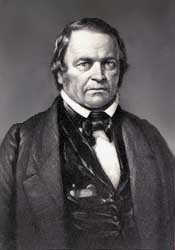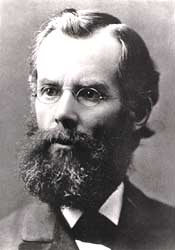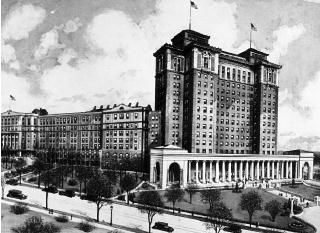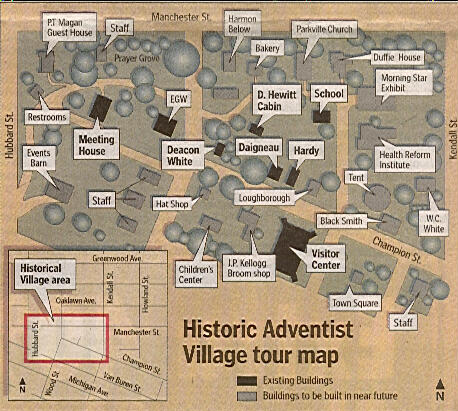|
|
|

The seventh day Adventist Church grew out of the world wide religios in the mid-nineteenth century. From a handful of persons who carefully studied the Bible in theirsearch for truth to over 8,000,000 members and millions of others who saw the Adventist Church as their spiritual home. People of many religous persuasions believed that the Bible prophecies indicated that the second coming or advent of Christ was imminent. Doctrinally, Seventh-day Adventists are successors of the Millerite movement of the 1840's. Although the name "Seventh-day Adventist" was chosen in 1860, they had another name before that "Seventh-day Sabbath." The church was not officially organized until May 21, 1863, and began its mission to the world. The organisational structure of the seventh-day Adventist Church has enabled it to keep pace with its rapid growth. A heavy emphasis on medical and missionary work around the world.
 |
 |
 |
 |
The origin of the Seventh-day Adventism goes back to the early 1800's to Mr. William Miller (1782-1849). He had converted from deism to christianity in 1816 and became a Baptist. Mr. Miller very dedicated reader of God's words and developed a focus in the second coming of Jesus, which spread around the christian world, and began preaching when he was 50 years old. Based on his study of the prophecy of Daniel 8:14 which says, "And he said to me, "For 2,300 evenings and mornings; then the holy place will be properly restored." He interpreted the 2300 evenings and mornings to be years and counted forward from 457 BC when the commandment to rebuild Jerusalem was given (Dan. 9:24-25). The time was right and many people (Millerites) accepted the idea that Jesus will come between the years 1843-1844. Miller calculated that Jesus would return to earth on March 21, 1844 but later changed to October 22, 1844. When Jesus did not appear, Miller's followers experienced what became to be called "the great Disappointment." The thousands of people who had joined the movement left it in deep disillusionment.
A few, however, went back to their Bibles to find why they had been disappointed. Soon they concluded that the October 22 date had certainly been correct, but Miller had misinterpreted the prophetics events and the secon coming of Christ was still in the future. Mr. Hiram Edson claimed to have seen a vision. He said that he saw Jesus standing at the altar of heaven and concluded that Miller had been right about the time, but wrong about the place. In other words, Jesus' return was not to earth, but a move into the heavenly sanctuary as is referenced in Heb. 8:1-2.
From this small group who refused to give up after the great disappointment," several leaders arose who built the foundation of what would become the Seventh-day Adventist Church. Mr. Joseph Bates (1792-1872), a retired sea captain and converted to Millerism promoted the idea of Jesus moving into the heavenly sanctuary. A pamphlet published by Mr. Bates influenced James (1821-1881) and Ellen White (1827-1915)
This small nucleus of "adventists" began to grow where Miller's movement had begun. Ellen G. White, a teenager at the time of the Great Disappointment, numerous reports state that she saw visions from an early age, grew into a gifted author, speaker and administrator. She later became and remained the trusted spiritual counselor of the Adventist family for more than 70 years until her death in 1915. Early Adventists came to believe that she enjoyed God's special guidance as she wrote her counsels to the growing body of believers.
In 1860 at Battle Creek, Michigan, the loosely knit congregations of Adventists chose the name "Seventh-day Adventist" and, in 1863, formally organized a church body with a membership of 3,500 followers. At first, work was largely confined to North America until 1874 when the Church's first missionary, J. N. Andrews, was sent to Switzerland. Africa was penetrated briefly in 1879 when Dr. H. P. Ribton, an early convert in Italy, moved to Egypt and opened a school, but the project ended when riots broke out in the vicinity.
The first non-Protestant Christian country entered was Russia, where an Adventist minister went in 1886. On October 20, 1890, the schooner Pitcairn was launched at San Francisco and was soon engaged in carrying missionaries to the Pacific Islands. Seventh-day Adventist workers first entered non-Christian countries in 1894 -- Gold Coast (Ghana), West Africa,and Matabeleland, South Africa. The same year saw missionaries entering South America, and in 1896 there were representatives in Japan. The Church now has established work in 209 countries.
The publication and distribution of literature were major factors in the growth of the Advent movement. The Advent Review and Sabbath Herald (now the Adventist Review), general church paper, was launched in Paris, Maine, in 1850; the Youth's Instructor in Rochester, New York, in 1852; and the Signs of the Times in Oakland, California, in 1874. The first denominational publishing house at Battle Creek, Michigan, began operating in 1855 and was duly incorporated in 1861 under the name of Seventh-day Adventist Publishing Association.
The Health Reform Institute, later known as the Battle Creek Sanitarium, openedits doors in 1866, and missionary society work was organized on a statewide basis in 1870. The first of the Church's worldwide network of schools was established in 1872, and 1877 saw the formation of statewide Sabbath School associations . In 1903, the denominational headquarters was moved from Battle Creek, Michigan, to Washington, D.C., and in 1989 to Silver Spring, Maryland, where it continues to form the nerve center of ever-expanding work.
